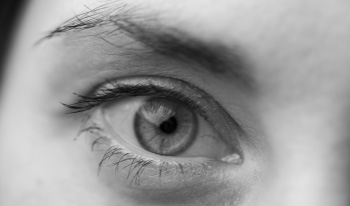
Color accuracy is essential in digital imaging for Cultural Heritage when reproducing an object into digital format. As a practitioner in the field, curiosity rose as to what the long-term effects are of working in a low-light environment after chronic fatigue and strained eyes became the daily norm. Multiple literatures were reviewed to extract the groundwork of color vision in low light and what achieves proper and consistent information processing; however, there were no known specific studies for the impetus for this topic. This research aims to explore color vision in low light to recognize potential short- and long-term physiological vision changes. Studies uncovered multiple variables impact human vision when processing an image or scene. This paper investigates the structure of the eye by comparing human vision to the structure of a camera system, the processing of color in the retina, the recommended viewing environment for cultural heritage capture, different conditions that impact perception, and solutions for regular eye maintenance. As is often said, awareness is the first step to prevention.

The population of low vision people increases continuously with the acceleration of aging society. As reported by WHO, most of this population is over the age of 50 years and 81% were not concerned by any visual problem before. A visual deficiency can dramatically affect the quality of life and challenge the preservation of a safe independent existence. This study presents a LED-based lighting approach to assist people facing an age-related visual impairment. The research procedure is based on psychophysical experiments consisting in the ordering of standard color samples. Volunteers wearing low vision simulation goggles performed such an ordering under different illumination conditions produced by a 24-channel multispectral lighting system. A filtering technique using color rendering indices coupled with color measurements allowed to objectively determine the lighting conditions providing the best scores in terms of color discrimination. Experimental results were used to combine 3 channels to produce white light inducing a stronger color perception in a low vision context than white LEDs nowadays available for general lighting. Even if further studies will be required, these first results give hope for the design of smart lighting devices that adapt to the visual needs of the visually impaired.

Functional lighting can control a specific wavelength in order to emphasize a desired color signal of an object. In this study, for the purpose of designing functional lighting for cheese, the effect of lighting on the palatability of cheese was analyzed from reflected light. To investigate the palatability difference caused by different illuminants, a psychophysical experiment was conducted using five types of cheese under metameric lighting with fixed color temperature and illuminance. A total of eight observers participated in this experiment: four of them who loved eating cheese were classified as group A, and the remaining four who disliked eating it were classified as group B. The experiment revealed that observers in group A agreed that illumination sources made the cheese look most palatable, whereas observers in group B showed variability in their preferred light sources. Based on these results, guidelines for designing an illumination source that can improve cheese palatability by controlling the wavelength band were determined, under the constraint that the reflected light exists within a specific chrominance region.

To enable the track and trace of pages from a color printer, data must be embedded and recoverable across the entire page regardless of the content on that page. This paper describes a solution that allows low visibility and high detectability of databearing “dot signatures”. An analysis of optimum dot-color to background-color combinations uncovers the serendipitous method of “Blue Clipping,” operating only on the blue component, exploiting low visual sensitivity to the blue channel. Blue Clipping is compared to the method of yellow dots, and the problem of dot gain for shadow dots is addressed. While initially designed for enterprise printers, this new technology is also adding functionality to 3D objects. It enables visually pleasing yet robustly recoverable data markings from a small region anywhere on a printed surface, without the need for costly special inks.